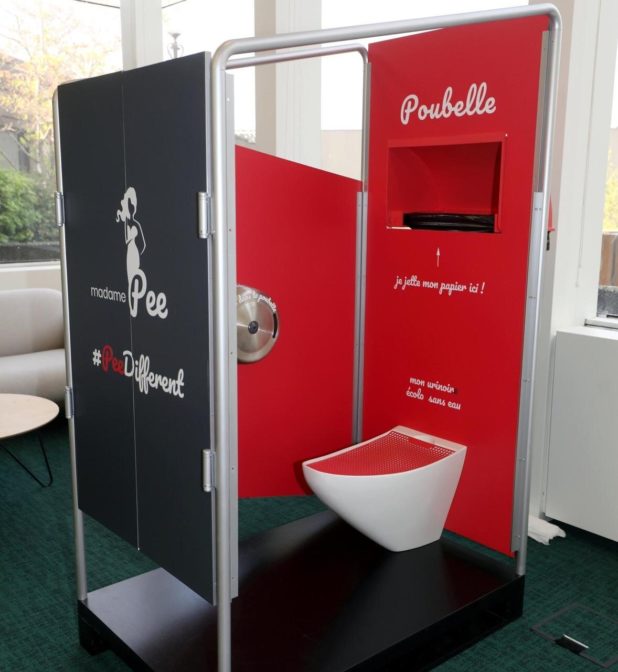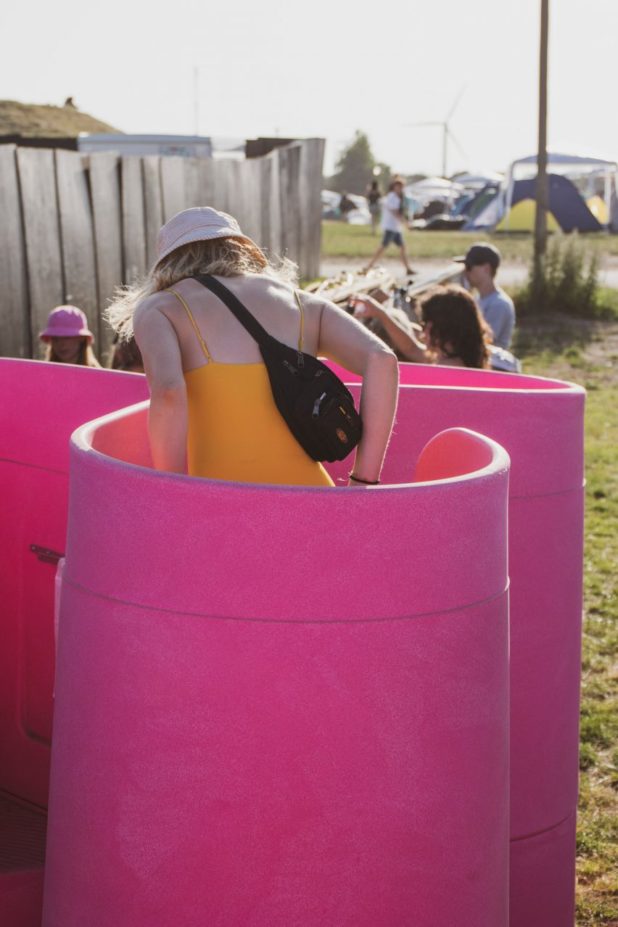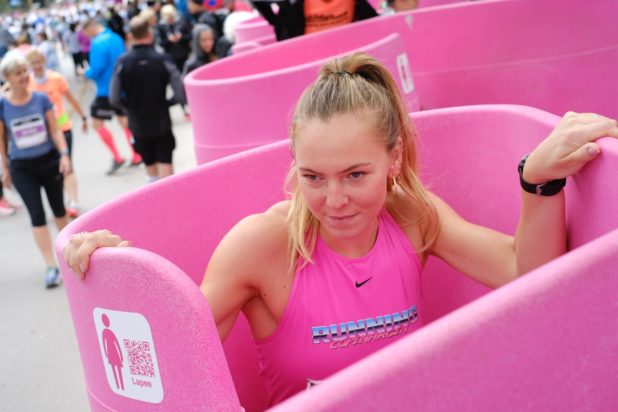Andrew Anglin
Daily Stormer
March 13, 2020
It’s nutty that the BBC reads like any of the other extreme kook leftist websites, given that it is funded by the British government. They actually claim to be apolitical, because it would be illegal for a government-funded outlet to be politically biased.
Imagine thinking a serious article about the validity of “female urinals” could be apolitical.
BBC:
A few years ago, Nathalie Des Isnards was attending a music festival with her husband David, and planning to watch her favourite group.
Before the show, they headed to the toilets. “I spent 30 minutes in the queue waiting to pee,” she recalls. Much to her frustration, she missed the first part of the concert.
Meanwhile David took just “two minutes”, and saw the whole show.
“I was upset. I told myself, ‘We’re in the 21st century, something should be done about that.'”
She set about creating a women’s urinal. The simple seatless basin she devised is housed in a cubicle with roof and door, designed for faster use but also privacy. “I was not a designer. I was a user first,” says the 46-year-old.
Despite innovations such as hers, women continue to face queues because, in Nathalie’s opinion, “Up to now, nobody has cared”.
However, thanks to social media, and growing competition between event organisers, she thinks the issue is getting more attention.
“[It] forces them to offer better services,” she explains. Also, organisers now realise, when women are queuing, they’re not spending money.
That’s a shockingly straightforward admission that this weird social agenda is ultimately driven by corporations trying to suck every last cent out of the consumer.
Des Isnards says 100,000 women used madamePee last year, at 15 events across France, including the Women’s World Cup. “It fits all women, not only young ones open to innovation.”
Two units have been also been installed in Paris as public amenities, she says. This year the loo will be in other several other countries.
“The ambition is very clear. It is to make it standard that each time you have urinals for men, you have a urinal for women,” says the French entrepreneur.
Even newer designs are aiming the trip to the loo even quicker.
Copenhagen-based architects, Gina Périer and Alexander Egebjerg have designed Lapee. It’s a female toilet consisting of three squat-urinals, moulded from bright pink, recyclable plastic.
“It’s just insanely more efficient,” says Ms Périer, 25.
…
According to their research, 90% of toilet queues are women needing only to urinate.
The team claim Lapee takes only 30 seconds to use, compared to one to two minutes for a regular cubicle. A 1,100 litre tank stores waste liquid underneath, allowing for about 3,500 visits. There are no doors, but the curved walls screen users from view, while encouraging quick use.
Getting women accustomed to urinals is one challenge, but Gina says women have welcomed their design. “We received a huge amount of posts on Instagram with very thankful messages,” she tells me.
…
Other urinal products have launched with varying success.
Perhaps best-known, SheWee, has been on the market almost two decades. The funnel-shaped device enables women to pee standing up.
Sam Fountain says her invention was first greeted with a mix of scepticism and joy. While it isn’t mainstream, the British firm says it has sold millions worldwide to outdoor enthusiasts, international military, people with health conditions, and charities for refugee camps.
…
Women typically take longer in the toilet because of biological, societal and practical factors, such as menstruation, childcare or different clothing. Often this isn’t addressed when toilets are planned.
Wait, are you allowed to say that men are biologically different than women?
I thought that was banned now.
“We take 1.5 to two times as long as men to use the toilet. But rather than receiving 1.5 to two times more toilets, we actually receive fewer,” Ms Ramster says.
“Men’s and women’s toilets are often built to the same square footage, but because you can fit more urinals in that space, men have more fixtures to use, usually, than women do.”
Researchers from Ghent University simulated the waiting times for six different toilet layouts. They found that boosting the number of female facilities relative to men’s (unsurprisingly) cuts women’s queuing times.
But the best option was to install gender-neutral cubicles, with optional urinals for men, which delivered even greater time savings for women.
I believe these probably would save time, but it’s because there is nowhere for women to stand around and talk, and there is nowhere for them to sit down and check their purse or use their phones or whatever else it is that they do.
Otherwise, excluding that stand and pee device, which is just disgusting and would leave you with a piece of plastic totally covered in urine, as well as the inside of the thighs totally covered in urine, the design of these “female urinals” follows the same model as a squat toilet.
In fact, it actually is just a squat toilet.
So what is the innovation? Of course people are going to move faster when they can’t sit down, but if you wanted to employ this system, you could just use squat toilets. You wouldn’t need “an innovative new solution.”
The reason you would offer “an innovative new solution” is that you’re trying to further commercialize “women’s empowerment” gibberish.
Which is what so much of this entire political agenda is about. With all of this dumb stuff, there is someone making money.
 Daily Stormer The Most Censored Publication in History
Daily Stormer The Most Censored Publication in History










